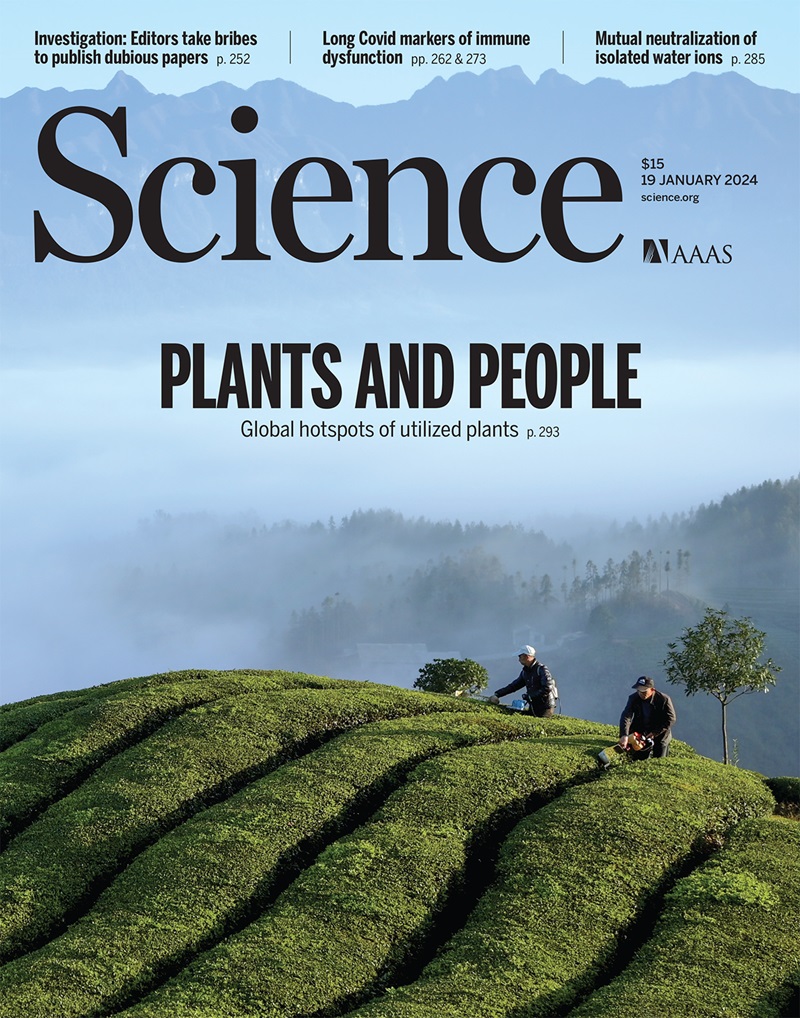动态生物界面控制贻贝粘附。
IF 44.7
1区 综合性期刊
Q1 MULTIDISCIPLINARY SCIENCES
引用次数: 0
摘要
贻贝附着的分泌物界面揭示了无生命物质是如何与组织相容的。本文章由计算机程序翻译,如有差异,请以英文原文为准。
A dynamic biointerface controls mussel adhesion
Marine mussel adhesion to surfaces has been extensively studied owing to its potential as an adhesive in wet conditions (1-3). However, most studies focus on the chemical binding mechanism of mussel byssus, an adhesive secreta, to surfaces (4), whereas the connections between living tissue and the byssus have rarely been explored. Although strong adherence of mussels on rocky reefs is necessary for survival, these sessile organisms can liberate themselves from anchored substrates to regain mobility when encountering predators or harsh environments (5). How do mussels ensure strong and compact connection to byssus yet quickly release it when needed? On page 829 of this issue, Sivasundarampillai et al. (6) reveal that the dynamic biointerface between mussel tissue and byssus plays an important role in Mytilus mussels. Their finding could be informative about how nonliving materials can be dynamically interfaced with living tissue, as in the case of detachable biosensors and medical implants.
求助全文
通过发布文献求助,成功后即可免费获取论文全文。
去求助
来源期刊

Science
综合性期刊-综合性期刊
CiteScore
61.10
自引率
0.90%
发文量
0
审稿时长
2.1 months
期刊介绍:
Science is a leading outlet for scientific news, commentary, and cutting-edge research. Through its print and online incarnations, Science reaches an estimated worldwide readership of more than one million. Science’s authorship is global too, and its articles consistently rank among the world's most cited research.
Science serves as a forum for discussion of important issues related to the advancement of science by publishing material on which a consensus has been reached as well as including the presentation of minority or conflicting points of view. Accordingly, all articles published in Science—including editorials, news and comment, and book reviews—are signed and reflect the individual views of the authors and not official points of view adopted by AAAS or the institutions with which the authors are affiliated.
Science seeks to publish those papers that are most influential in their fields or across fields and that will significantly advance scientific understanding. Selected papers should present novel and broadly important data, syntheses, or concepts. They should merit recognition by the wider scientific community and general public provided by publication in Science, beyond that provided by specialty journals. Science welcomes submissions from all fields of science and from any source. The editors are committed to the prompt evaluation and publication of submitted papers while upholding high standards that support reproducibility of published research. Science is published weekly; selected papers are published online ahead of print.
 求助内容:
求助内容: 应助结果提醒方式:
应助结果提醒方式:


